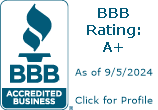How to Identify Hail Roof Damage in Minutes

We’ve all been there: a sudden downpour, flashes of lightning, and the loud ping of hail pelting on the roof. While it might feel like an exciting weather adventure, the aftermath can be daunting, especially when it comes to your roof. Ignoring hail roof damage can lead to costly repairs down the line, and trust us, you don’t want to be scrambling for roof repairs after realizing too late that your shingles have sustained damage. Being proactive and recognizing hail damage early can help prevent more extensive—and expensive—issues later on. So, let’s dive straight into how you can quickly assess any potential hail damage after a storm.
What Does Hail Roof Damage Look Like?
Hail can be notorious for sneaking up on us. You might think of a roof as a steadfast protector of your home, but even the strongest roofs can fall victim to hail damage. Hail impacts roofs by knocking off granules—the tiny protective bits on shingles that keep moisture at bay—leaving them vulnerable to leaks. Other signs of hail damage may be less visible but equally damaging. That’s why it’s vital to understand the signs of hail damage that can lead to extensive roof issues down the road.
Your 5-Minute Hail Check: Quick Inspection Checklist
You’ve braved the storm, and now it’s time for a quick inspection. What you don’t want is to be left wondering, “What if my roof is damaged?” Grab your trusty checklist—this should only take five minutes!
– Safety First:
Make sure the storm has fully passed and there are no high winds before heading outside.
– Look from Afar:
You can start from the ground. Stand at a safe distance from your home and scan your roof for visible damage.
– Check Your Shingles:
Look for any visible dents or missing pieces—these could be signs of hail damage. Specifically, see if there are any cracks in shingles or exposed fiberglass from the impact.
– Inspect Your Gutters:
Clogged gutters can point to granule loss, another common aftermath of hail.
– Survey Nearby Trees:
High winds and hail can cause branches to fall, potentially hitting your roof.
Dinger or Danger? The Signs of Hail Damage to Watch For
As you start your inspection, keep an eye out for some key indicators:
-Dented Shingles:
Damage often manifests as small dimples on otherwise smooth shingles. Imagine bowling balls raining down; that’s the kind of impact we’re talking about.
-Granule Loss:
If you notice granules in your gutters or dowspouts—like little pebbles of concern—your shingles could be compromised. This granule loss means your roof is losing its protective layer.
-Leaks or Moisture in the Attic:
Has the ceiling suddenly started to show signs of water? When you see leaks or notice moisture creeping into your attic, it might just be a red flag for hail damage.
We could even throw in some diagrams here to make everything that much clearer!
Tools to Help Detect Hail Damage
We live in an age where technology can make life easier. Why not leverage that when inspecting your roof? Here are some tools that could be your new best friends:
– Binoculars: A good pair of binoculars can allow you to see up close without having to climb on your roof (which we do not recommend unless you’re a trained professional!).
– Camera: Capture any damage with your phone or camera. This documentation will be helpful if you end up filing an insurance claim.
– Drones: If you’re feeling particularly techy and adventurous, drones can offer an aerial view that makes spotting hail damage a breeze. Just keep an eye on any local regulations!
When to Call in the Experts: The Benefits of Professional Inspection
So, you went through your inspection checklist, but the signs of hail damage are still making you uneasy. That’s where we come in! It’s always wise to get a professional assessment if you suspect any hidden damage—after all, we know the ins and outs of roofing in Austin like nobody else.
Bringing in the experts means you can rest easy knowing a qualified team will thoroughly assess the situation. Our experienced crew at Austin Hi-Tech Restoration utilizes advanced techniques to spot issues that might not be visible to the untrained eye. Plus, with our preferred vendor status from some top insurance carriers, we can streamline your insurance claim process too!
Next Steps: What to Do If You Discover Hail Damage
If your quick inspection results in discovering hail damage, don’t panic! Here’s a step-by-step action plan:
1. Document and Report the Damage
Take pictures of your roof’s condition and any affected areas. This documentation will serve as important evidence for your insurance claim.
Read more from the Texas Dept of Insurance: Hail damage to your home or car? What to do next.
2. Understand the Insurance Claim Process
Your insurance policy often covers hail damage, but it’s essential to understand the claims process. Don’t be afraid; we’re here to help guide you!
3. Contact Austin Hi-Tech:
Whether it’s a minor repair or extensive restoration, our team is ready to assist you with detailed assessments and quality restoration work. Plus, we understand that dealing with hail damage can be overwhelming, and we are here to take care of the hard work for you.
Conclusion: Protect Your Home & Invest in Peace of Mind
Prompt action is your best ally when it comes to hail damage. The sooner you identify and address issues, the better chance you have at minimizing repairs and protecting your home. We encourage you to inspect your roof regularly, especially following storms, because a little prevention goes a long way.
Don’t Wait—Contact Austin Hi-Tech Today!
If you’ve discovered signs of hail damage or have concerns about your roof’s condition, don’t hesitate! Reach out to Austin Hi-Tech Restoration for a free consultation or inspection. Let us help you keep your home safe and secure after a storm. Remember, we’re the trusted experts in hail roof damage restoration in Austin, and we’re here to protect what matters most to you!




